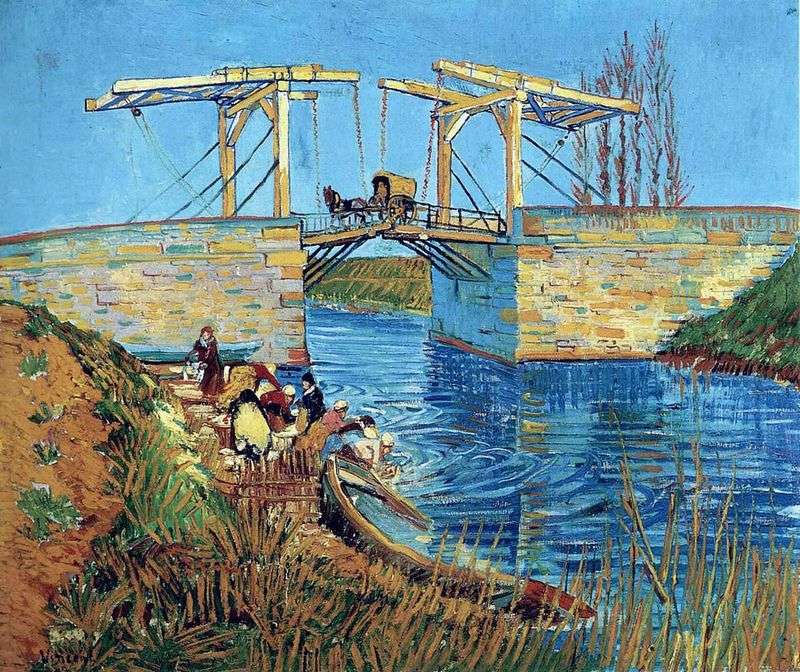
In 1888, Van Gogh settled in the small town of Arles in Provence. The nature of this area fascinated him with bright sunlight and air transparency. Here Van Gogh painted a lot from nature, placing an easel on the ground and not paying attention even to a strong wind. So in one of the spring days he created the painting “Langlois Bridge”.
Against the background of a bright blue sky, one can clearly see a wagon traveling along a drawbridge. He himself, despite its cumbersomeness, seems light and airy. The artist masterfully achieves this effect with the help of blue reflexes on the stone masonry of the bridge. Light areas are written by the artist’s favorite color, yellow, which gives a feeling of bright sunlight. A little reddish branches of trees indicate the spring season. The blue river reflects the blue of the sky, and on the left, on the orange-green shore, you can see washerwomen in colorful coins, washing laundry.
A characteristic feature of this picture is the clarity of lines and the filling of large planes with color. This is the influence of Japanese art, which Van Gogh highly appreciated. The entire landscape is painted with bright, clean and transparent colors. The picture seems to be permeated with sunlight, the joy of life and the premonition of her new awakening.
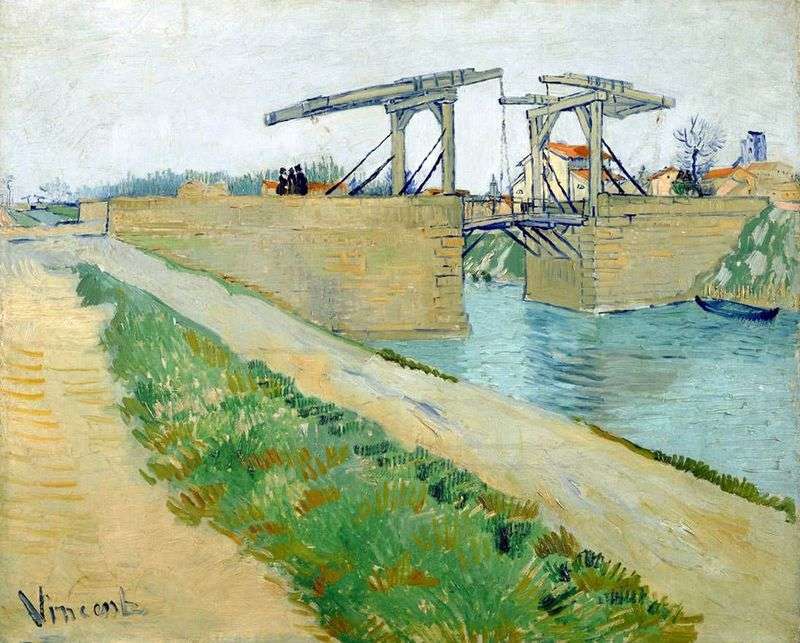 The Langlois Bridge in Arles and the road along the canal by Vincent Van Gogh
The Langlois Bridge in Arles and the road along the canal by Vincent Van Gogh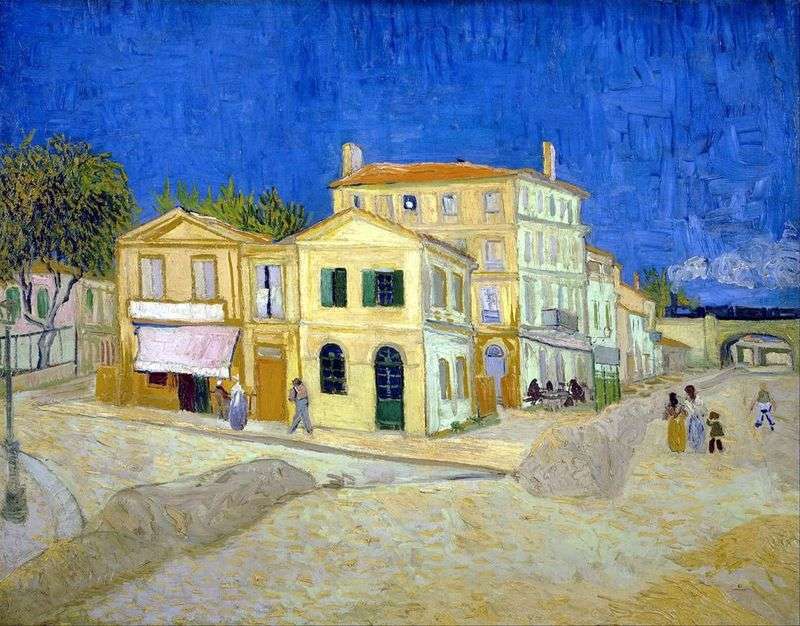 House of Vincent in Arles (yellow House) by Vincent Van Gogh
House of Vincent in Arles (yellow House) by Vincent Van Gogh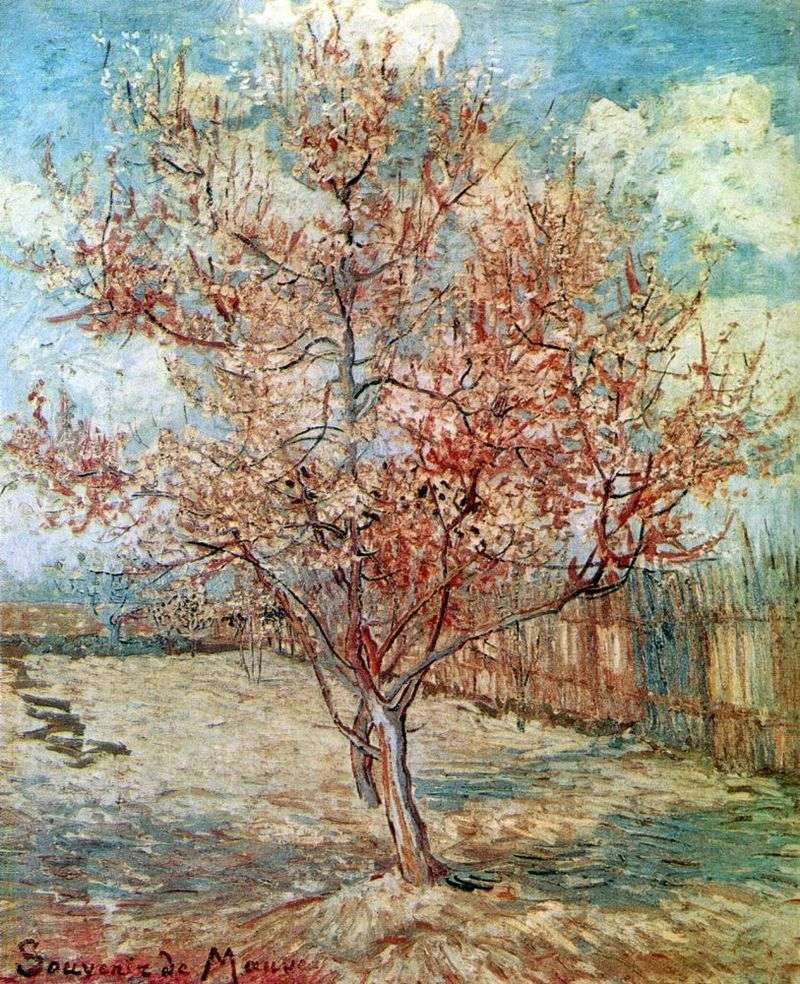 Peach in bloom by Vincent Van Gogh
Peach in bloom by Vincent Van Gogh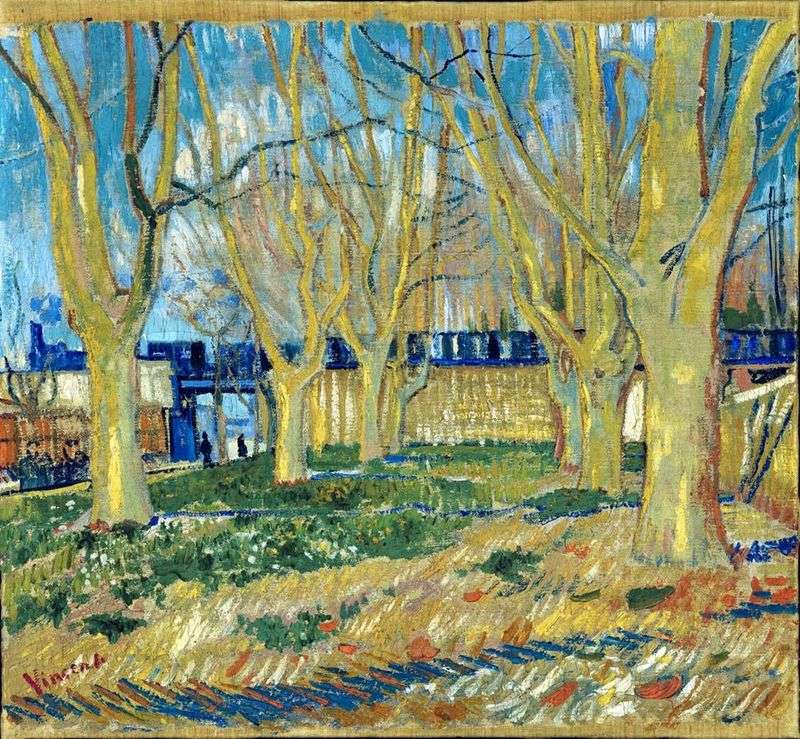 The Plane Alley by Vincent Van Gogh
The Plane Alley by Vincent Van Gogh Bridge over the Seine in Asnieres by Vincent Van Gogh
Bridge over the Seine in Asnieres by Vincent Van Gogh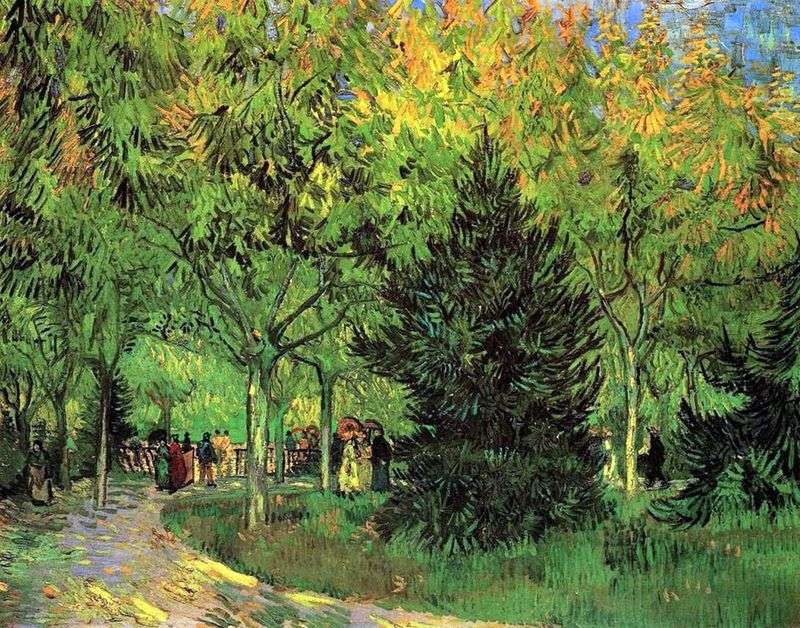 A path in the public garden in Arles by Vincent Van Gogh
A path in the public garden in Arles by Vincent Van Gogh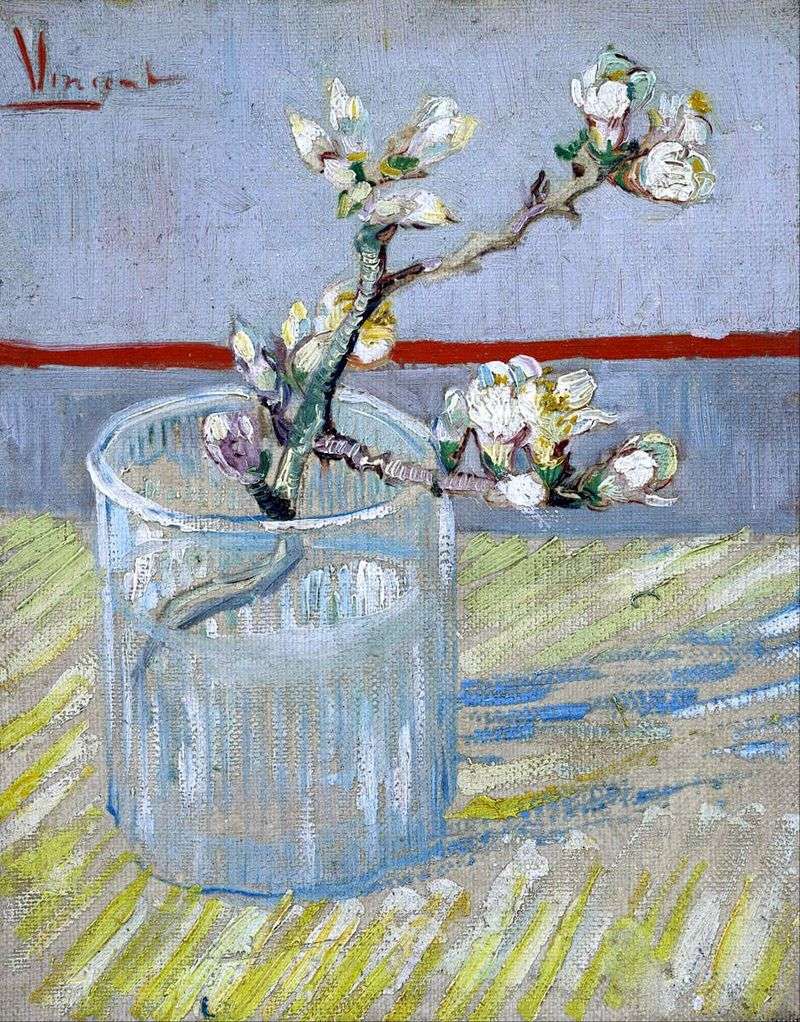 A branch of flowering almonds in a glass by Vincent Van Gogh
A branch of flowering almonds in a glass by Vincent Van Gogh View of Arles among flowering trees by Vincent Van Gogh
View of Arles among flowering trees by Vincent Van Gogh